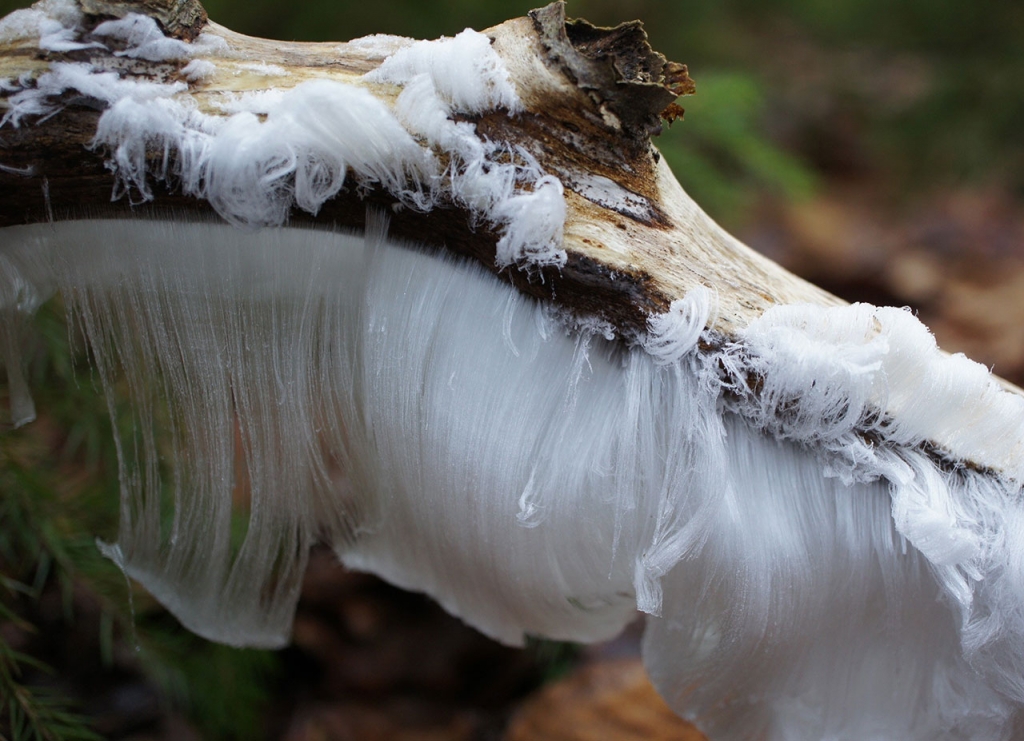Research team explains the reason behind “Hair Ice” – the fungus Exidiopsis
“When we saw hair ice for the first time on a forest walk, we were surprised by its beauty”, Christian Matzler, a researcher at the Institute of Applied Physics at the University of Bern in Switzerland, explained in a press release.
As you can see in the picture, hair ice is a collection of very thin ice follicles, that are less than a millimeter wide, that has been found in forests on damp wood.
Since the initial discovery of this whitish cobwebby coating by Alfred Wegener in 1918, the fungus species and mechanism that drives the growth of the hair ice had yet to be discovered.
This “hair-ice” is usually found on humid winter nights, and researchers are finally getting to the bottom of what causes it to grow, the European Geosciences Union reported.
Scientists have been scratching their heads for almost a century over just how and why “hair ice”-glistening clusters of ice resembling snowy heads of hair-burst out through rotting wood”.
An equal amount of ice can be produced on wood either with or without the fungal activity. It is spotted mainly in broadleaf forests and grows mostly during the night and melts when the sun rises, according to the study.
It is also nearly completely invisible in the snow, making the task of finding it in nature relatively hard. One species – Exidiopsis effuse – appeared in every sample. They have utilized state of the art technology to pinpoint the exact species. The fungus, Exidiopsis effusa, was found on all wood that exhibited the unusual ice phenomenon. These fungi decompose lignin with the enzyme lignase, which causes the wood to rot. When the air temperature drops sufficiently, water freezes into crystallization nuclei on the wood.
Fungus also acts as a hairspray by shaping the fragile ice hairs and keeping the strands in place, while lignin likely prevents recrystallization, which is the conversion of small ice crystals to bigger ones. After the wood covered with mycelium was treated with a fungicide, or given a scalding water bath, there was no growth of hair ice.
In future research, the researchers intend to fine-tune the details of the connection between the fungus and hair ice.
Published in the Biogeosciences journal of the EGU, the team confirmed the 100-year-old theory behind the origin of this handsome spectacle through a set of experiments.
More recent tests done by a research team in Switzerland suggest that winter-active fungus is indeed the source of the ice – or at least the reason it’s able to exist. With the mystery of the hair ice finally solved, further research can now be conducted on this species of fungus, in order to determine the extent of its hair-like ice particle producing properties.








